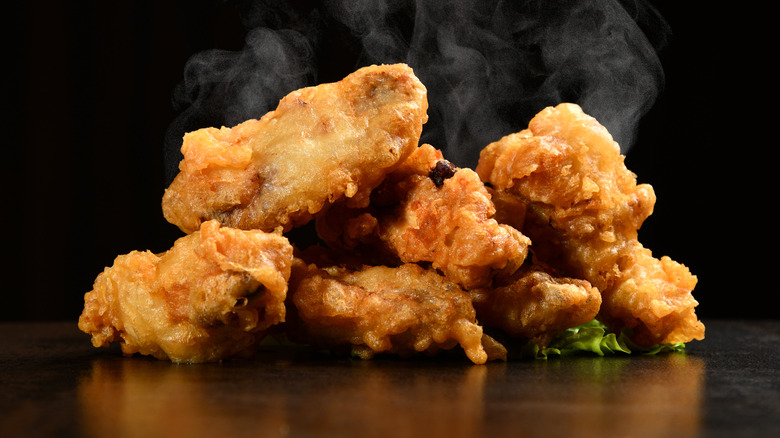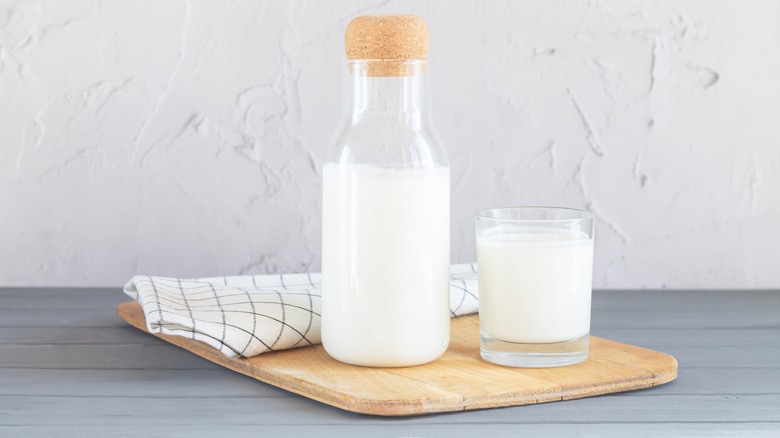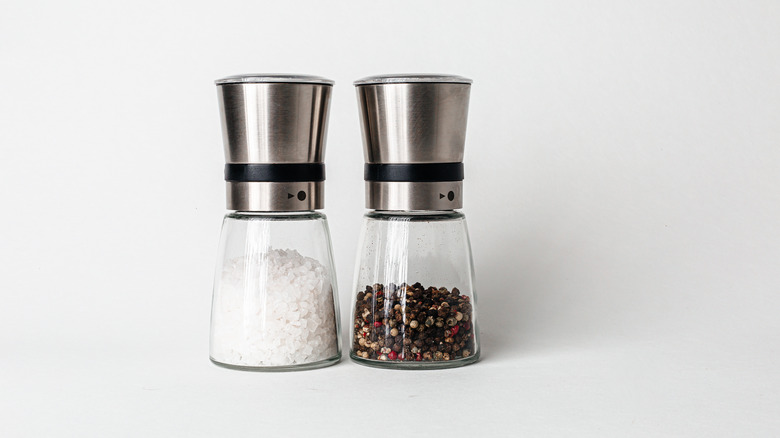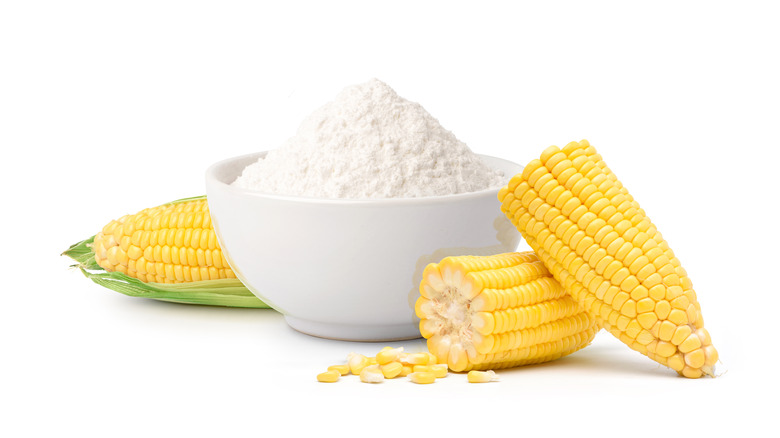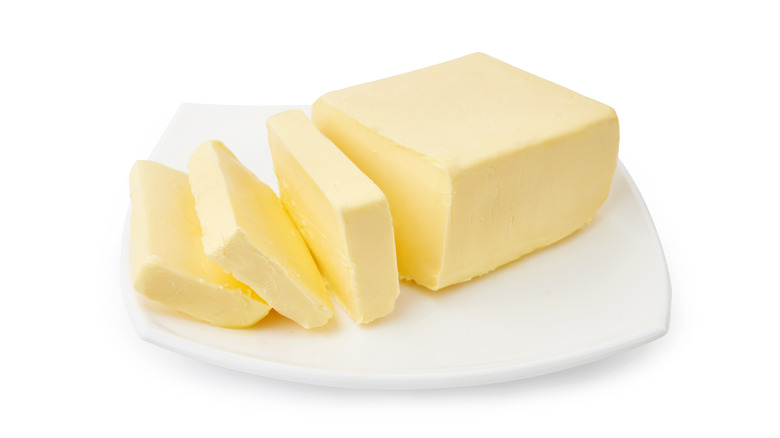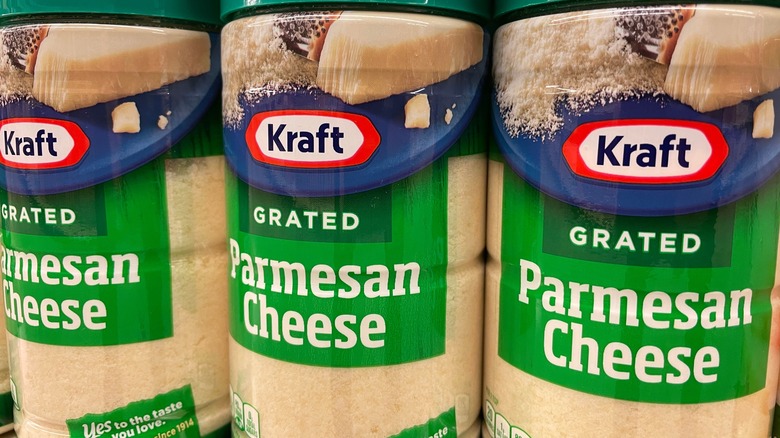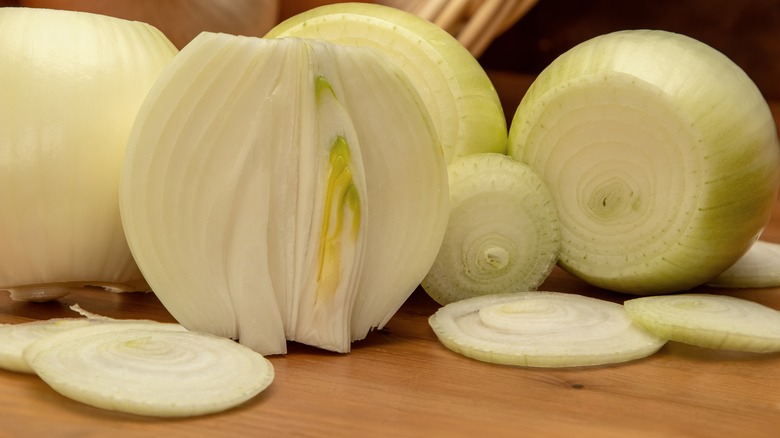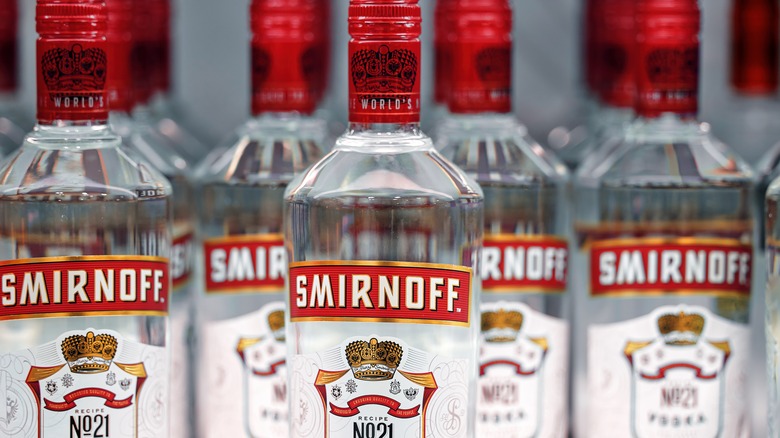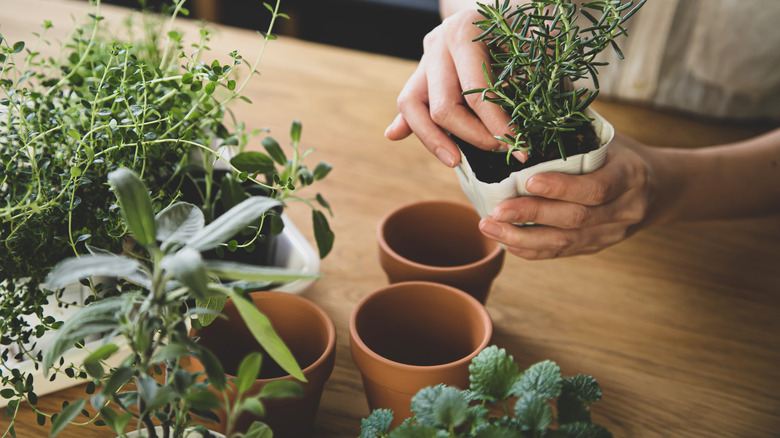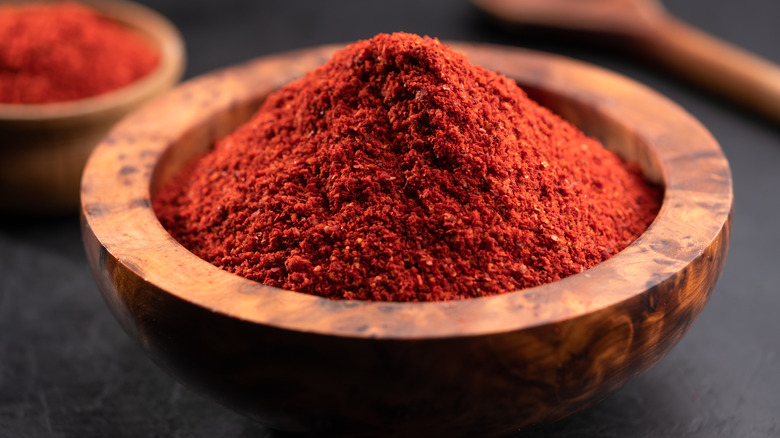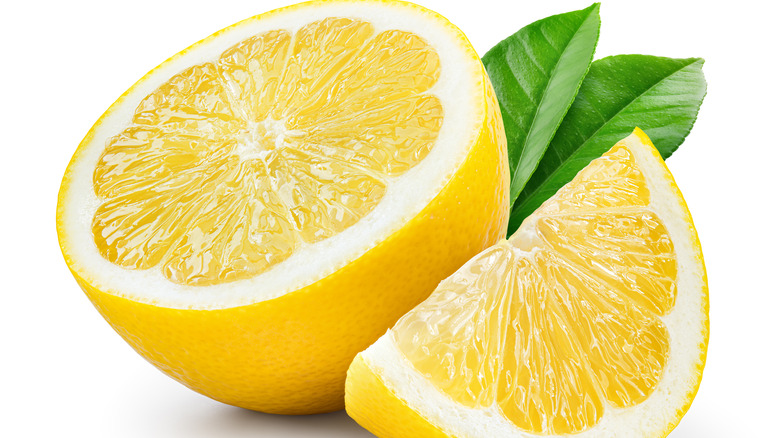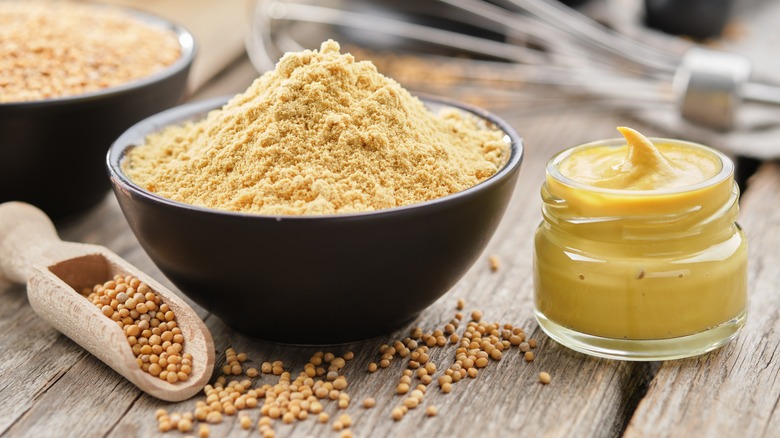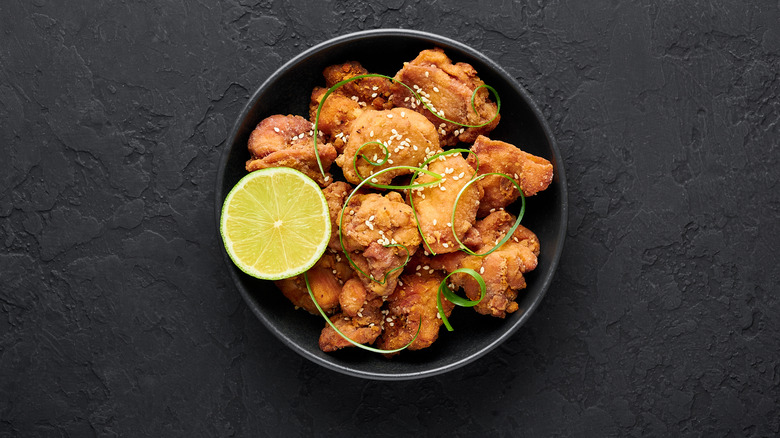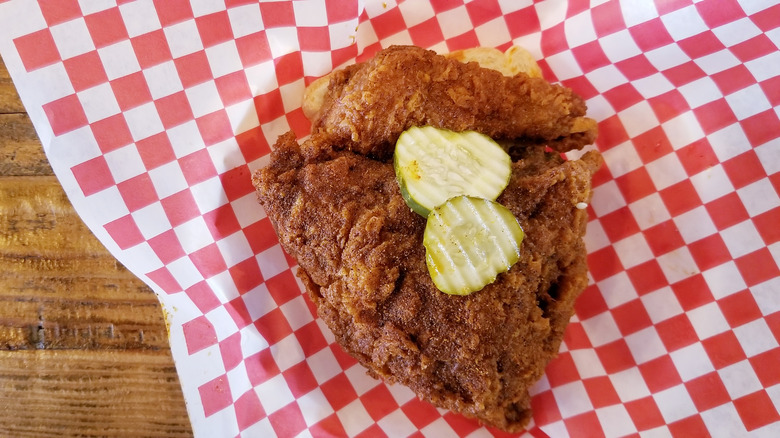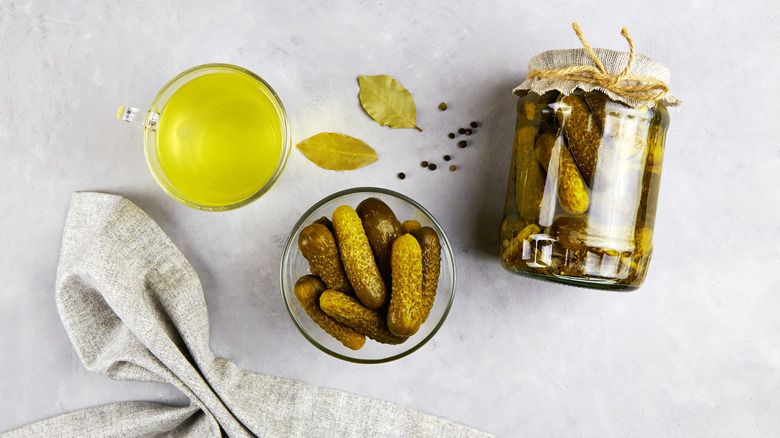14 Ingredients You Should Be Adding To Your Fried Chicken
Nothing says comfort food like crunchy, delectable fried chicken. The appetizing aroma and sizzling sounds of chicken frying are enough to quickly get everyone seated at the table.
Plenty of our favorite foods come from other countries, but we can credit the U.S. for all-American fried chicken. The dish has a significant history in America, particularly in the South, dating back to the 1700s when the first recording of the fried bird was written by Virginia governor William Byrd, per Eater. The infatuation for the crunchy, tender treat has only increased over time. In a survey by National Today, 50% of Americans said they love fried chicken, and 16% said they'd marry it. Yes, they'd marry fried chicken.
However you feel about it, fried chicken is here to stay. And if you're going to test your culinary skills by making some homemade fried chicken, you might as well do it right. In this article, we'll look at several ingredients you should be adding to your fried chicken for a meal that's traditional but never boring. Let the frying and finger-licking begin.
Buttermilk is better than milk
Fried chicken connoisseurs know it's not southern fried if there's no buttermilk in the batter. Buttermilk gives any recipe a little bite and is a rich alternative to milk. It's used to drench the chicken before coating it in whatever breading you're using.
Unless you use buttermilk regularly, you might not have it stocked in the refrigerator on fried chicken night. No worries. There are some substitutes you can use for buttermilk that you're more likely to already have. Two of the most common options are vinegar and milk or lemon juice and milk. Either one helps to "sour" the milk and make it taste like buttermilk. You can also try yogurt or sour cream. Just thin them out a little with water and you'll have a concoction similar to the real thing. If you're usually in a hurry to make dinner — as many of us are — consider keeping powdered buttermilk in your pantry for such emergencies. It's super handy and you'll be more likely to try your hand at some new recipes when it's always available.
Never skip the salt and pepper
Like buttermilk, can you even have fried chicken without salt and pepper? Possibly, but it will be quite dull. Sprinkle a liberal amount of each seasoning into your flour mixture before frying. For a more intense flavor, use freshly ground black pepper and ground sea salt.
Most of us have table salt quite handy; however, there is a difference between sea salt and table salt. Sea salt isn't as finely ground as table salt, so it has more texture. The texture adds a little more crunch to the chicken, especially if you sprinkle some on the freshly fried chicken rather than putting it in the flour mix. You can certainly do both, just be careful not to go overboard. You want your fried chicken to be salty, but not overpowered by salt.
Salt's favorite sidekick is pepper, and it's better freshly ground as well. The best way to grind black pepper isn't with a traditional pepper grinder. Take your peppercorns and throw them in your coffee grinder for a fine, fresh black pepper that's perfect for fried chicken.
Mix some cornstarch with the flour
If you like an extra crunchy piece of fried chicken, then you'll enjoy adding a secret ingredient to your fried chicken recipe. With the simple addition of cornstarch mixed into your flour, your chicken will don a beautiful brown color when fried, and you'll enjoy an unapologetic crunch that you can't get with only flour. Use a 50-50 ratio of flour and cornstarch then add your other ingredients as usual.
Don't confuse cornstarch with corn flour and accidentally add the wrong thing. There are many types of flours out there to keep straight. Corn flour is simply ground corn, and the result is a yellow, flavorful flour. Cornstarch is ground corn with the proteins removed, leaving the starchy part of the corn to be finely ground into a white, flavorless powder. The lack of flavor allows the chicken to shine without interruption. Corn flour works just fine for your chicken, but you won't get the crunchy result of cornstarch and it will alter the taste.
No cornstarch on hand? No problem. You can substitute cornstarch with arrowroot, rice flour, and even tapioca. However, you may not get the brownness that you would with actual cornstarch. The corn gives the chicken an extra bit of color that other flours and starches can't provide.
Add butter to the oil
Chicken is usually fried in oil because it works well. However, oil doesn't taste all that great. Invite some butter to the skillet and watch the flavor explode. Butter brings salty goodness to everything it touches and is simply irreplaceable. Feel free to use a fancy butter brand if you're feeling adventurous, or just grab your regular old butter when using it to fry chicken.
Now that you agree that butter is everything, let's discuss how to go about using it when frying chicken. One of the biggest mistakes people make when using butter is forgetting that it has a low smoke point, meaning it burns when overheated. That's why combining butter with oil works perfectly. The oil doesn't burn as easily and protects the butter from burning. Still, keep the heat low and always keep butter moving around in the skillet to help prevent a smoky mess. Butter will not only add flavor, but it will also give your fried chicken a beautiful golden-brown coating.
Classic parmesan makes a great coating
You don't need anything fancy here. When it's time to buy parmesan for frying chicken, grab the grated parmesan cheese in a green can that you used to love to shake on top of your spaghetti (and still do). Fresh parmesan will melt and won't give you the crispy skin you're looking for when frying chicken. Instead, you'll have a gooey mess (tasty, sure, but gooey).
Using parmesan to create crunchy coatings isn't anything new. You've probably enjoyed parmesan-crusted tilapia or salmon before. Parmesan does the same wonders to chicken, providing a crunchy coating with a slightly sharp flavor. Toss some parmesan into your flour mixture along with garlic powder, salt, and pepper. Use the mixture to coat the chicken after you've dipped it in the milk, buttermilk, or whatever you're using to drench it. You can also sprinkle some parmesan on the chicken immediately after frying so it sticks nicely and adds an even stronger parmesan flavor.
Add onions to the skillet for flavor
You're frying anyway, so why not throw in some onion rings? Even if you don't want to eat them, adding sliced onions to the oil while it's frying only gives the chicken more flavor. With so many to choose from, make sure you use the right type of onion when cooking your fried chicken. Some varieties are sweeter, milder, or more pungent than others, and you'll want something that can complement the chicken without overwhelming it. A good Vidalia or yellow onion should do the trick.
Slice your onion into rings and fry them up alongside the chicken. Be sure to add them closer to the end of fry time if you like a little snap to your onions, as prolonged cooking will make them soft. Oil helps caramelize the onions so they'll turn out absolutely delicious with very little effort, other than moving them around in the pan so they don't burn. Serve your onions on top of the chicken, on the side, or simply enjoy the flavor they've given to the meat.
Try vodka for extra crunch
Vodka has a secret: It knows how to make crispy, crunchy fried chicken. Due to the alcohol in vodka, it evaporates quickly, unlike other moisture used to marinade or dredge the chicken before it fries. The quick evaporation results in fried chicken that isn't soggy. The vodka batter loses moisture at a faster rate than water and you're left with a bubbly, crunchy, browned piece of fried chicken. Yum.
There are plenty of other culinary uses for vodka as well, including in flaky pie crusts and creamy pasta sauces. For chicken, though, just add some vodka to the mixture that you're using to drench the chicken or use it as the liquid in your marinade. Coat with the breading as usual and fry it up. During the cooking and evaporation process, the flavor of the vodka mellows dramatically so you aren't left with a piece of chicken that tastes like vodka. Keep a bottle in your refrigerator or freezer so it's cold and ready to go in your recipes that require flakiness or crunch.
Add some fresh herbs
Fresh herbs add a little color, beautiful aromas, and fantastic flavors to your fried chicken. Mix them in with the batter before frying or sprinkle them on at the end. Some great options for fried chicken are thyme, rosemary, oregano, or basil.
Be sure to refrigerate your herbs for maximum flavor when not using them. Herbs look lovely on the counter but it's frustrating if you're in the middle of cooking and grab a handful of wilted greens. You can also substitute fresh herbs with dried ones, which are much easier to store and keep for much longer. You may just need to add a little extra since the flavor isn't as strong.
For a subtle hint of herbs, sprinkle your favorites into the flour mixture so they coat the chicken. For a stronger taste, near the end of frying, after the chicken is nice and greasy, sprinkle each piece with your herbs so you really taste them when you bite into it.
Give your chicken a smokey flavor with paprika
Paprika not only adds beautiful color to everything it touches, but it's hard to get the flavor of paprika from anything else. It can be sweet or hot, depending on which type you choose, and always has the perfect amount of subtle, smoky flavor. It also looks pretty, but there's so much more to know about paprika. For example, did you know paprika is good for you? According to WebMD, it's rich in calcium, potassium, and phosphorous, along with other vitamins and minerals. Paprika won't turn fried chicken into the next health craze, but it certainly won't hurt it either.
It's important to remember that paprika's flavor intensifies when it's heated in oil, making it the perfect companion when frying. As with most spices when frying chicken, you can sprinkle it in the skillet with the oil or add paprika to your flour mixture to coat the chicken pieces. Enjoy richly colored, flavorful fried chicken with this gorgeous spice.
Add some lemon zest or juice
Lemon juice tenderizes meat and adds a wonderful lemony flavor to any dish. Your fried chicken will thank you when you let it soak in some lemon juice before frying. Of course, it's best to use fresh lemon for the ultimate lemon flavor. But if you don't have a fresh lemon handy, you probably have a couple of items at home that you can use as a substitute, such as chewable vitamin C tablets mixed with water, or powdered lemonade mix.
Whatever form your lemon juice takes if you're using it for a marinade, soak your chicken pieces for a couple of hours before coating them in flour and frying them. According to Livestrong, any longer than two hours will ruin the chicken's texture. The lemon's acid tenderizes the meat, but can break it down too much if it's soaked too long. You can also zest a lemon into your flour mixture for crunchy, lemony fried chicken. Or sprinkle some zest onto the chicken when it's hot and greasy out of the fryer.
Tangy mustard gives chicken a kick
Mustard tends to play second fiddle to ketchup, getting lost in the condiment mix. But it's time to step aside, ketchup. Sure, you're great on a hot dog (unless you're from Chicago), but you can't do to chicken what the powerful little mustard seed can. Once you add mustard to your fried chicken recipe, you'll never go without it. It adds an extra layer for the flour to cling to, as well as that tangy flavor that only mustard can provide. And it's a simple additional step to the process.
After soaking your chicken in buttermilk, brush a generous amount of mustard onto your chicken pieces. Spicy brown mustard and yellow mustard are good choices for this, but just about any mustard will work. Mustard not only adds a wonderful tang to the chicken, but also serves as a helpful aid in getting more of the flour added to the chicken. More flour means more crunch, and that's always a good thing.
Use potato starch for karaage fried chicken
Kentucky Fried Chicken fans stand back. Karaage fried chicken is the chicken to try when you want a superior crunch and intense flavor. You can experience this unique fried chicken at home with a few ingredients for a yummy, Asian marinade and a starch for coating. Potato starch is preferred, but you can use starches such as corn starch or other substitutes if you don't have any in the pantry. It's the starch that makes Karaage fried chicken so unique. You can't get the same impeccable crunch when using only flour. The reason is that starch slows the development of gluten, which in turn makes a crispier coating, per Rouxbe.
Plus, because of its Japanese influence, Karaage chicken is drenched in fabulous ingredients like ginger, soy sauce, and sake. Sometimes egg yolk is even included. You may not often think of the Japanese culture when considering fried chicken, but once you taste Karaage, you'll want it again and again.
Make your own chili oil for Nashville-style hot chicken
Are you the spicy type? If so, you need to head to Nashville for some Nashville-style hot chicken. Or, better yet, make your own hot chicken right at home. Cowboy boots are optional, but two things aren't — pickles and chili oil. The chili oil is for drizzling and dipping when the chicken is done, and the pickles are a tasty addition that get placed on top of each piece of deep-fried goodness. You only need six ingredients to make chili oil at home: garlic, dried chiles, habanero pepper, canola oil, Spanish paprika, and sea salt. The result is a deep red, spicy oil.
Legend has it that the history of Nashville's world-famous chicken is just as spicy as the meal. A man named Thornton Prince was the creator of the first piece of hot chicken. In an interview with StyleBlueprint, his great-niece, André Prince Jeffries, owner of Prince's Hot Chicken Shack in Nashville, shared the story. "This goes back some 80 odd years," she said in the interview. "They didn't keep records back then, but my great uncle is the one we credit with starting the business. He was a very handsome man and quite the womanizer. He was married over five times, so we don't even know which woman was the one who served up the first hot chicken. But he was the first to eat it." Fried chicken with a bit of scandal? It's got to be good.
Save your pickle juice for a brine
Are you ready for the ingredient that will change your fried chicken forever? Here's a hint: Pickles go perfectly with fried chicken. Before frying your bird, brine it in pickle juice. Brining chicken is important because it guarantees tenderness. However, brining with pickle juice goes further by giving your chicken the same tangy flavor that you love in a pickle. It just kind of makes sense, doesn't it?
Our recipe for pickle juice-brined fried chicken requires 3 cups of pickle juice, so start saving the juice when you eat your pickles. Just don't get too overzealous with brining. It's a wonderful way to tenderize meat; however, you shouldn't brine your meat for too long because it will ruin the texture of whatever you're soaking. Soggy meat is not appetizing. Shoot for an hour or two and you'll get just enough pickle flavor and tender chicken, ready to dip in a flour mixture and fry.
